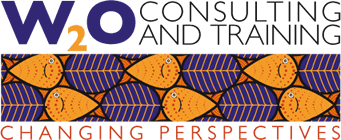Attracting diverse candidates is front of mind for many organisations at the moment. I recently even came across a cry for help on LinkedIn by a company director asking anyone who is black or Asian to please apply.
Of course, the Black Lives Matter movement has pushed diversity right to the top of many boardroom agendas. Organisations don’t just want to say the right thing and avoid a backlash; they want to do more, so me and my colleagues working in diversity and inclusion are getting a host of enquiries.
It is, of course, great news that organisations seem to be moving forwards. But what can you do practically? What can you do in your company if you are keen to attract more diverse people? What can you do beyond writing a plea on LinkedIn? Where do you find those diverse people?
Why you are not attracting diverse candidates
You need to start by asking yourself why you are not attracting diverse candidates. Typically organisations attract people like themselves. That is because they go to the schools and universities they have always gone to. They ask the people in their network, typically people like them. They design campaigns that work for people like them. No surprise then if that’s what you do, that you end up with people like you.
So how can you change that? Simple, you widen your recruitment channels. After all, the biggest lever to diversity is at the top of your recruitment funnel. But how do you widen your recruitment channels? Below I have gathered the key questions to ask yourself. These questions can help you to get creative and start thinking about where to find your target groups.
Attracting diverse candidates – questions to ask
- Who are my key target groups and where do they hang out? Then of course make sure that that’s where you advertise your jobs too.
- Where do my candidates typically come from? How can we get more candidates in that pipeline? Eg attract more diverse students into STEM from a young age or run a course for women in boardrooms.
- Which colleges and universities do we recruit from? How could we recruit from different ones? Those with more diverse candidates?
- Which educational tracks do we recruit from? Which adjacent tracks exist where you might find people with a similar mindset or interest?
- Which internal tracks do we have in place to move people up? How could people in different areas of the organisation or with a different experience or skill set do this role?
- Which industries are currently in decline? What transferable skills might people in those industries have that could be useful in your industry? How could you create roles that maximise the use of those skills? What re-training could you offer to get them ready?
- Which groups of people might be looking for jobs later in life? Eg women returners or veterans. How can you offer a path into your industry for them? What transferable skills might they bring?
- Which current employees do I have in areas that are less relevant in future? How could I retrain those employees in roles in areas that are growing?
- Who could I partner with? Consider partnering with charities (eg charities aimed at improving chances for women, disabled people, black people, Asian people, older people), or with recruitment agencies offering services for recruiting or headhunting diverse candidates
- How could we enlist our own employees in our search for diverse candidates? Consider briefing them on what you are looking for and why, and ask them to engage with their networks
Tips for implementation
The above questions will help you get creative and start re-thinking your recruitment. The key in implementation is to find out where your target groups are, and then step into their shoes. What is important to them? How can you convince them your industry or organisation is of interest? What barriers do you need to take away for them? One way of finding out is by just asking your current employees from those target groups.
What typically works well for attracting diverse candidates is to create a path into your organisation that is low risk. That includes pilot sessions, open days, taster sessions, work experience or training programmes or just invite potential candidates to give you call.
Then of course you need to work with role models and get the wording and job descriptions of your recruitment right.
What is working for you to attract more diverse candidates?



Author: Inge Woudstra
Would you like to know more or have a question? I am always happy to have a chat to discuss your needs. Why not drop me a line or pick up the phone? Call me at 01372 457 907 or Just contact me to discuss your requirements by e-mail.I can help you recruit, retain and advance women, and typically work with organisations in tech and engineering.
Or just check out my book 'Be Gender Smart - The Key to Career Success for Women'